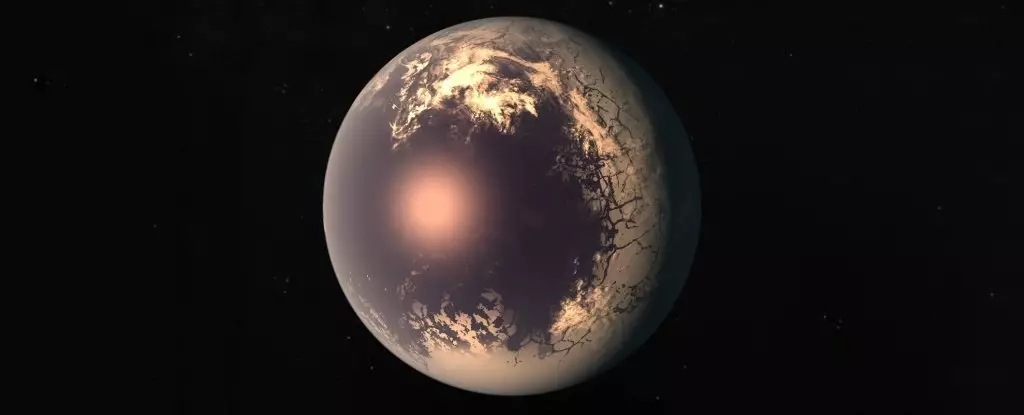The universe never fails to surprise us with its diverse and peculiar celestial phenomena. From hot Jupiters to mini-Neptunes and super-Earths, we have witnessed the existence of various exoplanets. However, there is one type of planet that stands out with its eerie appearance – the Eyeball Planets. Although the concept may sound bizarre, these planetary bodies serve as a result of a scientific phenomenon known as tidal locking. In this article, we will delve into the fascinating world of eyeball planets and discover how they manifest under the influence of their host stars.
Tidal locking occurs when the rotation period of an orbiting body matches its orbital period. As a result, one side of the planet is perpetually facing the star it orbits, while the other side remains in perpetual darkness. A well-known example of tidal locking is the Moon, which is tidally locked to Earth. This phenomenon explains why we only observe one side of the Moon from our planet. While Earth is not tidally locked to the Sun, scientists have discovered exoplanets that experience tidal locking with their stars. Consequently, these planets exhibit stark differences between their day and night sides.
A 2013 study published in the journal Astrobiology proposed the concept of habitable hot eyeball planets. In this scenario, a tidally-locked planet would have one side in a state of perpetual day and the other side in perpetual night. Depending on the planet’s proximity to its star, the day side could become dry and devoid of water due to the intense stellar radiation. However, the melting glaciers on the night side might create a region of perpetual twilight, where water is present. This tantalizing mix of conditions could foster a fertile environment capable of sustaining vegetation. Thus, the planet presents itself as a hot eyeball, with lush vegetation thriving in its twilight regions.
Further away from the star’s heat, an icy eyeball planet emerges. Similar to the hot eyeball, this planet also possesses a night-side ice cap. However, the key distinction lies in the star-facing side. Rather than a barren and desolate landscape like the Earth, it is covered by a liquid ocean. This icy eyeball planet’s unique composition creates the potential for habitability. The liquid oceans could resemble Earth’s teeming seas, fostering the development of diverse ecosystems despite the extreme conditions. Astronomer Sean Raymond suggests that hot and icy eyeball planets represent extreme cases, but the diverse nature of tidally locked planets opens up a myriad of possibilities. Cloud patterns, preferential melting or freezing of ice, and various other factors contribute to the potential for wild variations in the appearance of these fascinating celestial bodies.
Considering the vastness of the universe, the existence of giant space eyeballs may not be the strangest concept we come across. The grand diversity of planetary formations and the potential habitability of these eyeball planets reveal the astounding wonders that lie beyond our reach. As our understanding of exoplanets deepens, we can only imagine the vast array of peculiarities that await us in the unexplored reaches of the galaxy. The possibility of encountering more eyeball planets and uncovering their unique characteristics adds to the excitement and thrill of future astronomical discoveries.
Eyeball planets offer a fascinating glimpse into the effects of tidal locking on the appearance and habitability of exoplanets. These peculiar celestial bodies, with one side perpetually facing their star, present stark differences between their illuminated day side and their dark night side. From the hot eyeball with its fertile, twilight region to the icy eyeball with its liquid oceans, the universe never ceases to amaze us. As we continue to explore the depths of space, the presence of more eyeball planets and their extraordinary variations will undoubtedly expand our understanding of the vast and diverse cosmos that surrounds us.



Leave a Reply